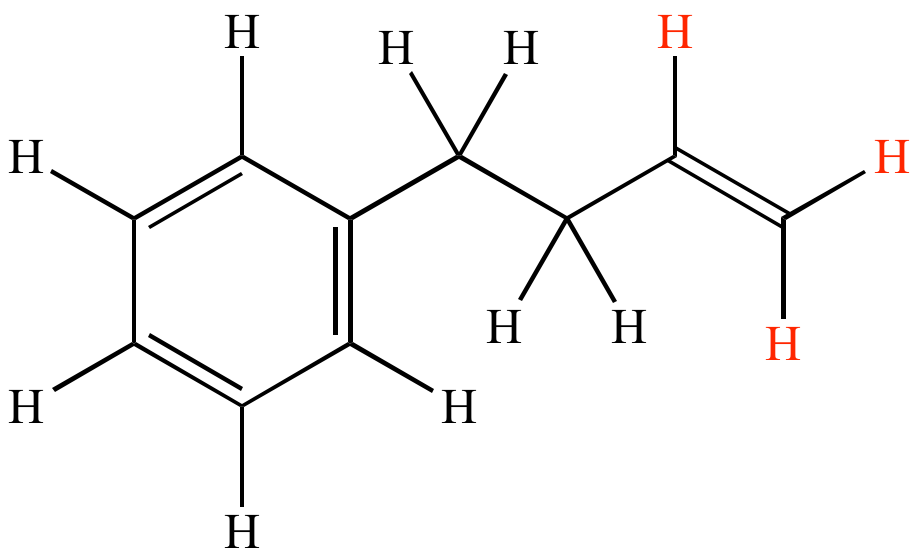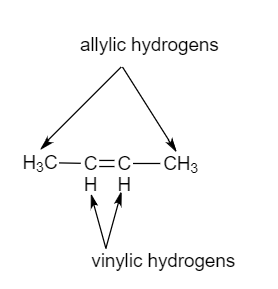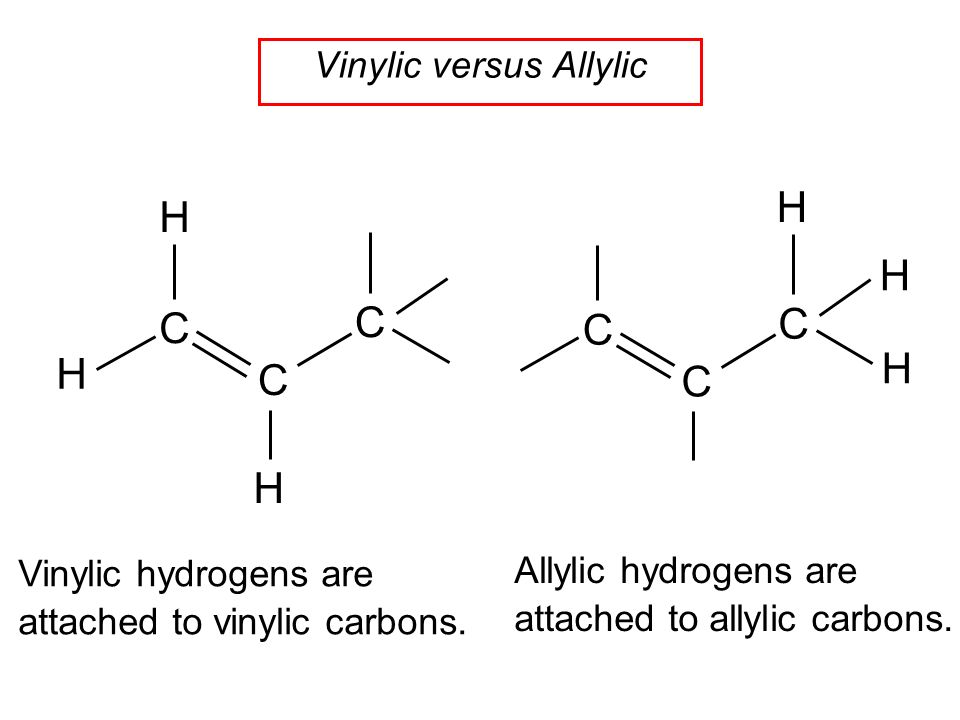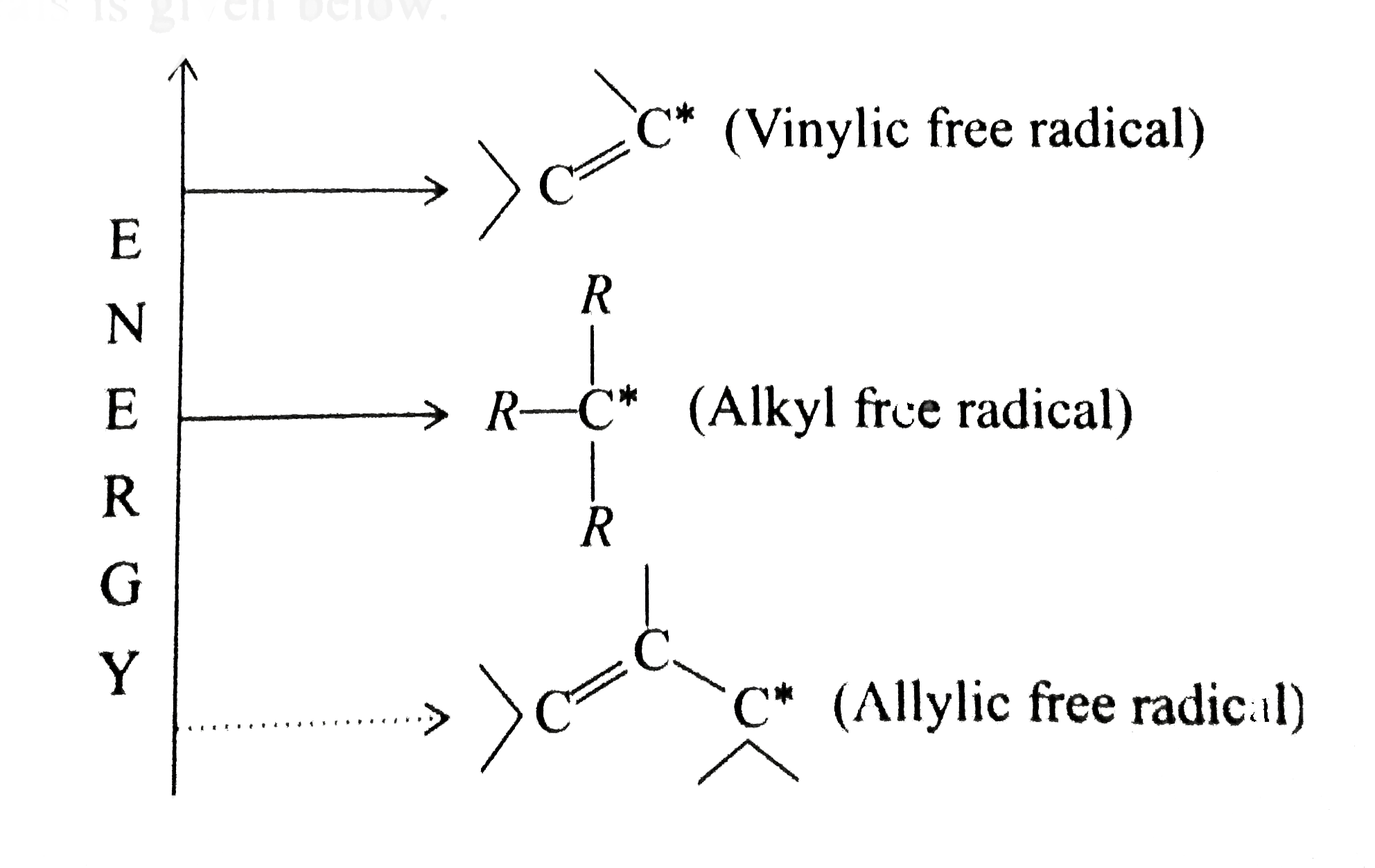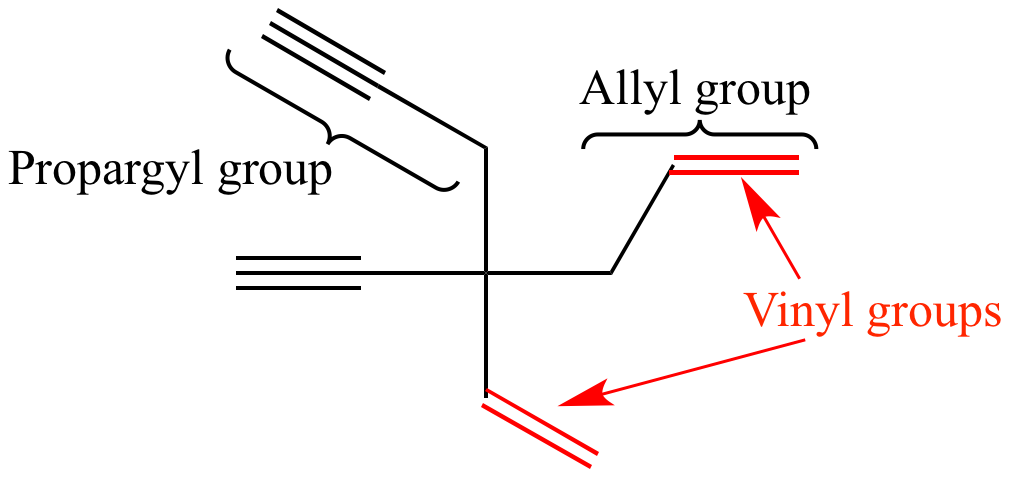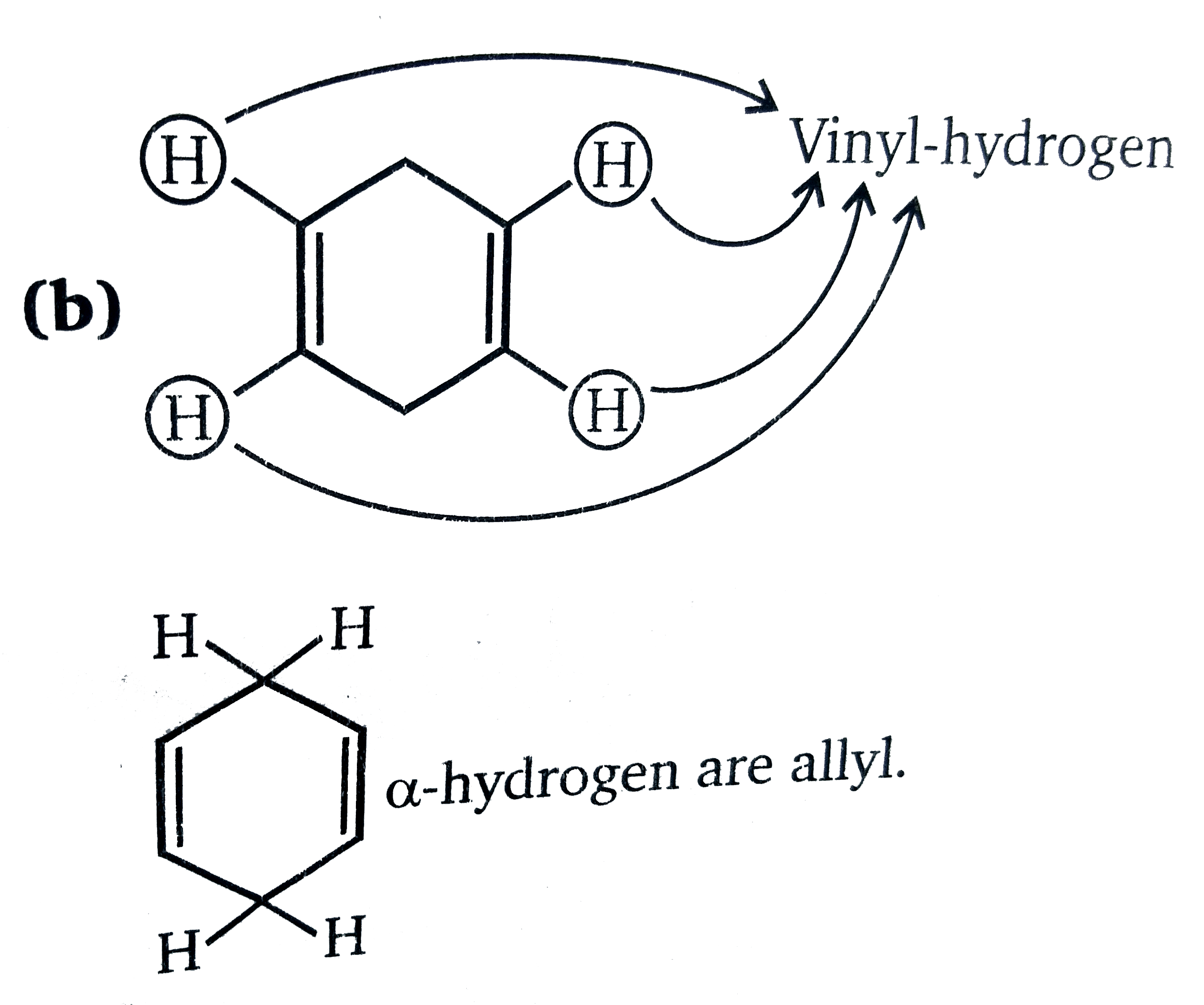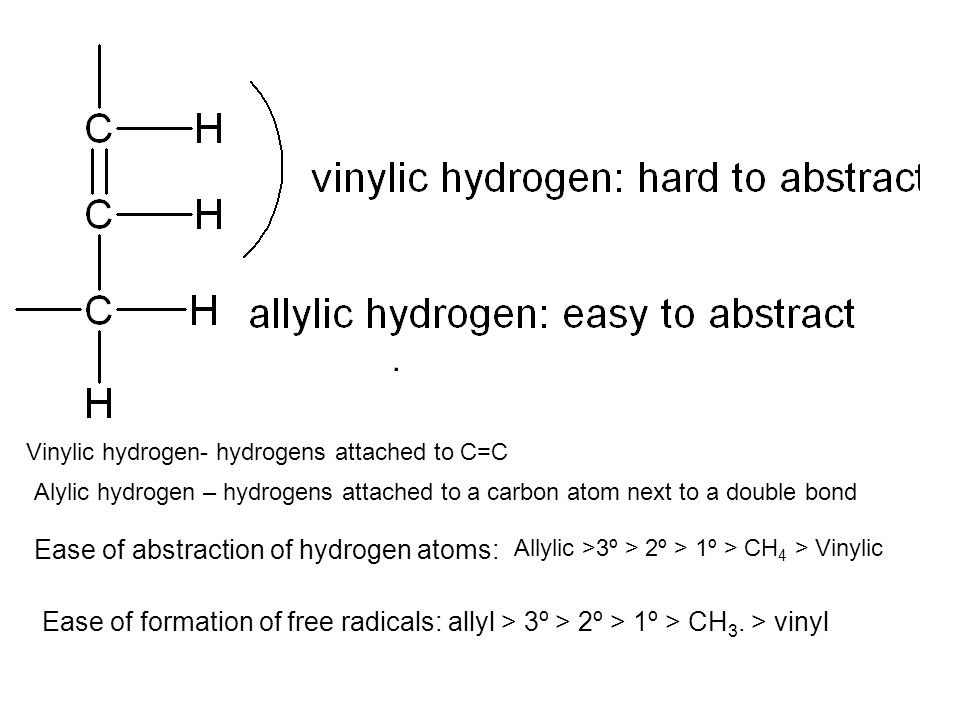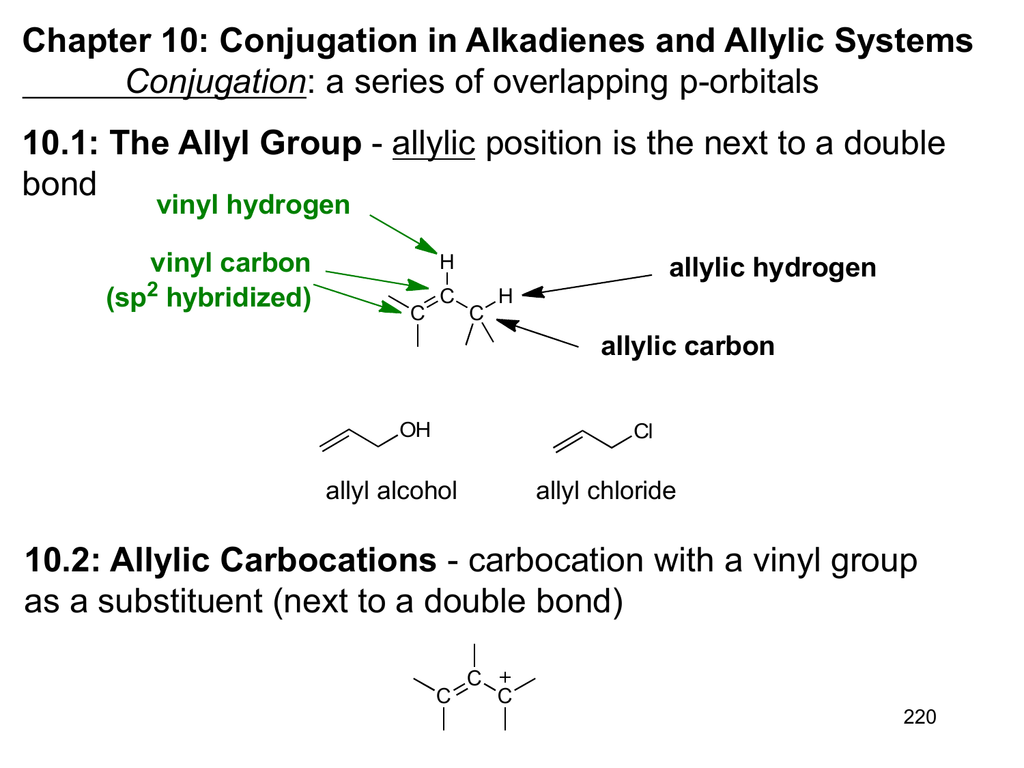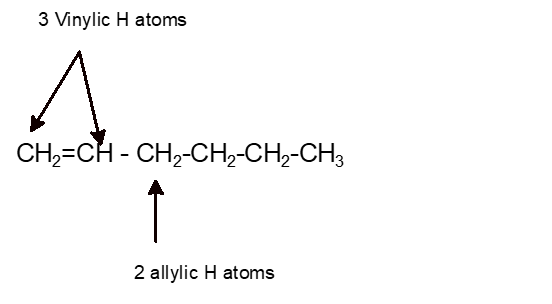Allylic Vinylic Hydrogen

How many vinylic hydrogens does cyclopentene have.
Allylic vinylic hydrogen. The general formula for allyl is r ch 2 ch ch 2 in which the asterisk carbon atom is an allylic carbon atom. Allyl indicates a functional group with structural formula h 2 c ch ch 2 r where r is the rest of the molecule it consists of methylene bridge ch 2 in between the vinyl group ch ch 2 and the rest of the molecule therefore allyl group contains sp 2 hybridized vinyl carbon atoms and sp 3 hybridized allyl carbon atom. How many allylic hydrogens does it have. The allylic carbon is bonded to a carbon atom which is doubly bonded to another carbon atom.
The vinylic hydrogens are shown in red. The libretexts libraries are powered by mindtouch and are supported by the department of education open textbook pilot project the uc davis office of the provost the uc davis library the california state university affordable learning solutions program and merlot. It consists of a methylene bridge ch 2 attached to a vinyl group ch ch 2. The name is derived from the latin word for garlic allium sativum in 1844 theodor wertheim isolated an allyl derivative from garlic oil and named it schwefelallyl.
The key difference between allylic and vinylic carbon is that allylic carbon is the carbon. An allyl group is a substituent with the structural formula h 2 c ch ch 2 r where r is the rest of the molecule. Allyl group holds three carbon atoms and five hydrogen atoms on the other hand vinyl group has two carbon atoms and three hydrogen atoms. However at normal use levels an aromatic oil which can contain a significant concentration of benzylic and allylic hydrogen atoms will have a significant effect.
A review of the fundamentals of crosslinking with peroxides. Key difference allylic vs vinylic carbons functional groups are very important in understanding the different physical and chemical properties of organic molecules the terms allylic and vinyl carbons indicate whether the carbon atom is bonded directly or indirectly to a double bond in a molecule. Benzylic position allylic position propargylic position aryl aryl hydrogen. The allylic position is also like a vinylic position.
Allyl form a stable carbocation because of the electron delocalization whereas vinylic carbocations are unstable as they lack p character. None of the other hydrogens are vinylic. A hydrogen atom bonded to an sp 2 carbon of an alkene.
